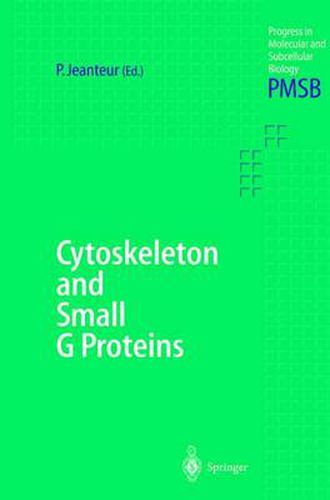Readings Newsletter
Become a Readings Member to make your shopping experience even easier.
Sign in or sign up for free!
You’re not far away from qualifying for FREE standard shipping within Australia
You’ve qualified for FREE standard shipping within Australia
The cart is loading…






This title is printed to order. This book may have been self-published. If so, we cannot guarantee the quality of the content. In the main most books will have gone through the editing process however some may not. We therefore suggest that you be aware of this before ordering this book. If in doubt check either the author or publisher’s details as we are unable to accept any returns unless they are faulty. Please contact us if you have any questions.
Animal cells present an extreme variability in their shapes in relation to their physiological properties. For instance, fibroblastic cells are tightly attached to the extra-cellular matrix and display a flattened, spindle-shaped morphology. Neuronal cells self-organize as a network through a complex branching of dendrites and a long axonal extension. Resting peripheral blood lymphocytes are poorly adhesive and maintain a spherical, smooth shape, while macroph- ages produce many pseudopodal extensions involved in the recognition of foreign molecules. In addition to the variability of the morphology of the cells that constitute different organs, many cell types also modify dynamically their morphology in response to environmental changes, leading to differential cell motility, migration, adhesion, polarity or intercellular contacts. This wide plasticity of cell morphology is promoted and maintained by the cytoskeleton, which is composed of the three interconnected actin micro filaments, tubulin microtubules and intermediate filaments networks, all capable of assembly and disassembly. Over the past few years, the Rho family of Ras-like GTPases emerged as key proteins that mediate extracellular signalling pathways leading to the forma- tion of polymerized actin-containing structures such as ruffles, lamellipodia and filopodia. Since the discovery of the first member RhoA in 1985, 13 mem- bers have so far been characterized in human cells. Most of Rho proteins are highly conserved between species as distant as yeast, slime mold, insects and mammals, which points to their fundamental role in cellular physiology.
$9.00 standard shipping within Australia
FREE standard shipping within Australia for orders over $100.00
Express & International shipping calculated at checkout
This title is printed to order. This book may have been self-published. If so, we cannot guarantee the quality of the content. In the main most books will have gone through the editing process however some may not. We therefore suggest that you be aware of this before ordering this book. If in doubt check either the author or publisher’s details as we are unable to accept any returns unless they are faulty. Please contact us if you have any questions.
Animal cells present an extreme variability in their shapes in relation to their physiological properties. For instance, fibroblastic cells are tightly attached to the extra-cellular matrix and display a flattened, spindle-shaped morphology. Neuronal cells self-organize as a network through a complex branching of dendrites and a long axonal extension. Resting peripheral blood lymphocytes are poorly adhesive and maintain a spherical, smooth shape, while macroph- ages produce many pseudopodal extensions involved in the recognition of foreign molecules. In addition to the variability of the morphology of the cells that constitute different organs, many cell types also modify dynamically their morphology in response to environmental changes, leading to differential cell motility, migration, adhesion, polarity or intercellular contacts. This wide plasticity of cell morphology is promoted and maintained by the cytoskeleton, which is composed of the three interconnected actin micro filaments, tubulin microtubules and intermediate filaments networks, all capable of assembly and disassembly. Over the past few years, the Rho family of Ras-like GTPases emerged as key proteins that mediate extracellular signalling pathways leading to the forma- tion of polymerized actin-containing structures such as ruffles, lamellipodia and filopodia. Since the discovery of the first member RhoA in 1985, 13 mem- bers have so far been characterized in human cells. Most of Rho proteins are highly conserved between species as distant as yeast, slime mold, insects and mammals, which points to their fundamental role in cellular physiology.